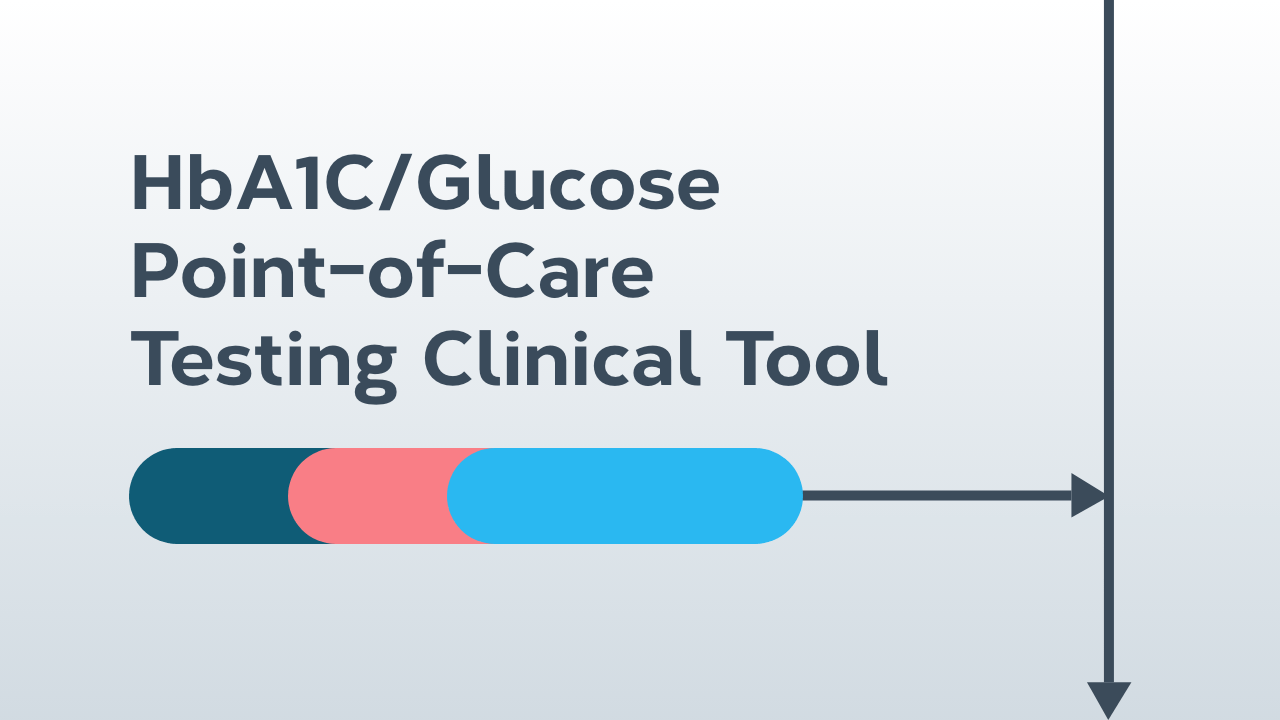The problem In 2019 the Global Initiative for Asthma (GINA) strategy introduced a radical change regarding the management of the majority of asthma patients: no longer should mild asthma patients be treated with a short acting beta agonist (SABA) alone, rather patients should be treated with inhaled corticosteroids (ICS) to treat the underlying inflammatory pathology associated with asthma.1 This change comes with the recognition of the paradoxes of asthma treatment which interfere with the best possible practice in treating these patients. Patient behaviour and goals result in a preference for SABAs when they are available, resulting in the over-use of SABA and corresponding underuse of ICS in patients with intermittent symptoms.2,3 This is a significant change in the management of asthma and one in which pharmacists should have a profound role in playing to improve patient outcomes.

There is growing recognition that high levels of SABA use are associated with poor outcomes for patients. Patients using ≥3 canisters of SABA/year are found to have a progressively higher risk of hospitalization.4 The use of 12 or more canisters per year of SABA is associated with an increased risk of mortality.5 In a review of 195 patients in the UK who died from asthma in 2012, it was clear that there was significant SABA over-use, with 39% using at least 12 canisters per year and 4% receiving 50 canisters. As well, 80% of these patients were receiving less than the optimal 12 prescriptions of asthma controller medication, such as ICS, in one year.6
Reasons for over-reliance on SABA are numerous:
- desire for an immediate fix for asthma symptoms,
- historical and embedded behaviour,
- higher cost of ICS therapy,
- poor adaptation to illness,
- stigma associated with chronic illness,
- career and social issues,
- fear of symptoms or side effects,
- anger at having illness,
- and the feeling of dependence on the short acting inhaler.7
Shared decision making between health professionals and patients improves adherence to asthma therapy.8 Similarly, there are many reasons for poor outcomes associated with over-use of SABA: there is no anti-inflammatory effect associated with SABA, they worsen the delayed inflammatory phase response,9 and recurrent use contributes to decreased bronchial response to the therapy.10 Data suggest that SABA therapy, while bronchodilating through smooth muscle relaxation, might simultaneously have the potential to increase airway obstruction through increasing mucosal inflammation, edema and secretion of mucins.11
The risks associated with systemic corticosteroids are also becoming more apparent. Patients who are treated with SABA monotherapy have a greater risk of severe exacerbation than patients treated with ICS; these exacerbations are routinely managed through the use of oral corticosteroids (OCS), typically in short courses or bursts.12 Repeated or persistent use of high dose OCS can cause side effects including risk of herpes zoster, cardiovascular events, type 2 diabetes, bone related conditions and fractures, avascular necrosis of the hip, cataracts, obesity, psychiatric effects and hypertension.13,14 It is vital to remember that the risk is strongly associated with cumulative OCS dose, rather than the maximum dose from a single course. Patients who receive even 1 to 3 prescriptions in a year have a 4% increased risk for adverse effects, while patients receiving 4 or more have a 29% increased risk, with the risk remaining elevated for long periods of time even after cessation of OCS use.14 There is a dosage-response relationship for OCS use and adverse outcomes and costs, with OCS treated patients having up to 3 fold greater healthcare utilization costs than untreated patients.15,16
Solutions
The 2019 GINA17 strategy reinforced in the 2020 update1 offers a solution for patients using, and potentially overusing, SABA as a reliever: the anti-inflammatory reliever (AIR).17 Combination products containing an inhaled corticosteroid (a controller) with a reliever (a fast-acting long-acting beta agonist (LABA)) can be used in place of a SABA in adults and adolescents 12 years and older who have infrequent symptoms (less than twice per month) and no exacerbation risk factors (Step 1). In practice, the only Canadian product with this indication is the combination of budesonide-formoterol.18 Formoterol is a long-acting beta agonist (LABA) with a fast onset of action and budesonide safety has been demonstrated when using multiple doses per day.19 Two large recent trials (SYGMA 1 and SYGMA 2) demonstrated the effectiveness of budesonideformoterol as-needed in patients with mild asthma by providing substantial reductions in exacerbation frequency compared with SABA monotherapy, and was similar in effectiveness to daily ICS treatment at a fraction of the ICS dose.20,21 Alternatively, and as per the GINA 2020 update these mild patients could use low-dose ICS whenever their SABA is taken (off label); however this would require two devices which may negatively affect adherence. For patients who have symptoms more than twice per month but less than daily (Step 2), the preferred options include an anti-inflammatory reliever (AIR) used as-needed or regular low-dose ICS with SABA, ensuring that the patient is adherent to the ICS therapy. Other controller options include leukotriene receptor antagonists (LTRA) or taking ICS whenever SABA is taken (off label). Treatment can be escalated if symptoms increase to most days and/or the patient is waking up due to their symptoms once per week or more (Step 3).22
For patients with moderate to severe asthma, patients with Step 3-5 therapy as per GINA, the need for regular controller therapy is paramount. The use of a regular ICS/ LABA is the preferred option for maintenance therapy.23 For those who use budesonide-formoterol as maintenance, using budesonide-formoterol as the reliever has been well studied and is both indicated and effective.23 For those using other ICS/LABA formulations, the use of an ICS/LABA as a reliever has not been studied and there are safety concerns. In these cases, SABA is the preferred reliever, however, clinicians must ensure that patients are adherent to their maintenance therapy and not overusing SABA.1 Before any step-up therapy is considered, it is essential to assess inhaler technique, adherence and environmental control.1,23
For many patients, the pharmacist is a trusted healthcare professional with whom they most interact. Pharmacists are accessible in the community and with more and more pharmacists offering expanded scope services, pharmacists are an integral part of a patient’s healthcare team. However, with this close integration with the community, pharmacists are also under great pressure as frontline providers, dealing with multiple demands and time constraints.
Pharmacists have a unique perspective on the medication use of the patient. Whereas physicians rely on patient recollection or reporting for adherence or over-use of medication, — (and patient recollection may be incorrect) — pharmacists have access to the more objective prescribing and medication profile of the patients. As a result, pharmacists have the opportunity to be a gatekeeper for SABA use – if the patient is using too much SABA, they can query the patient for the reasons, educate on the importance of controller therapy and make recommendations or referrals for further assessment and testing. These brief interactions with the patient can reveal significant issues with patient care that can be followed up with appropriate health care providers.
Likewise, a pharmacist can identify patients who are not using their ICS controller medications appropriately. If a pharmacist identifies a patient with mild asthma who is using excessive SABA or one who is non-adherent to their controller medication (favouring their SABA), the pharmacist may contact the prescriber (or instruct the patient to do so) and suggest the consideration of a combination anti-inflammatory reliever for that patient. What can a pharmacist do?

Pharmacists are very busy, but they have unique windows of opportunity when meeting with their patients. They have three opportunities to identify and manage potential asthma-related medication concerns with any patient:
1. Before Seeing the Patient
When a request for a refill or new prescription for an asthma medication is received, the pharmacist can review the past prescriptions and identify the over-use of SABA medications (3 or more canisters yearly17) or the under-use of ICS controller medications. The over-use of SABA suggests that patients are poorly controlled while the under-use of ICS may indicate a patient who is at risk for future exacerbations.7,24
2. During the Patient Visit
Every pharmacy visit by an asthma patient presents an opportunity for the patient. Even brief interactions supporting the patient can have profound effects, as seen with brief interactions supporting smoking cessation.25 Some actions that can be accomplished when talking with a patient for a few minutes include: a. A few questions about asthma control can provide the pharmacist with an indication that the patient may have poor control (e.g., the Asthma Control Test26). b. Assessment and teaching of correct inhaler technique can improve delivery of the medication to the lungs and improve control.27 c. Trigger avoidance and environmental control (e.g. allergens, smoking) in the patient’s home and work environment can be discussed and minimized. Similarly, untreated comorbidities such as rhinitis and sinusitis when identified and treated should also result in better control of asthma. d. Identify if patients have been diagnosed and/or assessed using spirometry with bronchodilation and, if not, refer the patient to their healthcare prescriber for a referral for spirometry, if appropriate. e. Identify patient concerns or specific issues with their asthma treatment.
3. After the Patient Leaves
If needed, and following interaction with the patient, the pharmacist can undertake intervention with the patient’s relevant healthcare professional team members. Suggestions for medication or inhaler device changes, issues with adherence, poor asthma control, need for spirometry and exposure to triggers should all be communicated with the patient’s primary care provider.
Communication with primary care physicians can present significant barriers for pharmacists. However, this is essential to effective patient management. Fostering communication and effective relationships with prescribers are among the hardest and least recognized aspects of providing effective patient care.
In the UK, the pharmacist has been recognized as having a central role in the support of patients with respiratory diseases, ensuring appropriate treatment and encouraging pharmacists to see themselves as “SABA guardians”.28 The UK National Health Service long term plan identifies that the incorrect use of asthma medications contributes to poorer outcomes and pharmacists in primary care networks will carry out medication reviews, patient education on inhaler technique, support patients to reduce the use of SABA, and switch to a combination anti-inflammatory dry powder inhaler where appropriate.29
Many of these strategies have been identified in the past. Pharmacists’ involvement with the differential diagnosis between asthma and COPD, including the potential role of pharmacist-initiated spirometry through adequate skills and training, has been identified in the management of respiratory disease.30 The GINA 2019 strategy offers patients the potential for enhanced health outcomes, better control of asthma and improved quality of life. Pharmacists can take on a central role in identifying high-risk patients with poor asthma control, underuse of appropriate maintenance therapies and/or over-use of SABA. Pharmacists can encourage the transition of patients from SABA monotherapy to the use of AIR where it is appropriate in order to improve outcomes in the right patient.
Acknowledgements
The authors wish to acknowledge the members of the Asthma Zero Steering group for their valuable insights into the creation of this manuscript. The Asthma Zero Steering group members are Dr. Anne Ellis, Dr. Sam Campbell, France Dubé, Vanessa Foran, Dorothy Pardalis, Peter Glazier, Dr. Alan Kaplan, Dr. Andrew Cave, Dr. Patrick Mitchell,
JP Dowson, and Dr. Rémi Gagnon.

Dr. Patrick Mitchell trained as a specialist in Respiratory and Internal medicine in Ireland. He undertook a two year clinical and research fellowship at McMaster University under Prof Paul O’Byrne. This encompassed translational research in airway inflammation and servicing both general respiratory and airway inflammation clinics. Dr. Patrick Mitchell also completed a two-year Medical Doctorate thesis on the role of IL-33 in allergic asthma.

Dr. Alan Kaplan
Family Physician Ontario
Chairperson of the Family Physician Airways Group of Canada (www.fpagc.com)
Honorary Professor of Primary Care Respiratory Medicine of the Observational and Pragmatic Research Institute, Singapore.
Vice President, Respiratory Effectiveness Group

Dorothy Pardalis currently works as a Clinical Pharmacist at the Tilbury District Family Health Team and in community pharmacy practice. She conducts comprehensive patient consultations specializing in COPD, Asthma, Diabetes, Medication Reviews and Smoking Cessation. She is a Certified Respiratory and Diabetes Educator. As President of Proactive Health Strategies Inc., Dorothy is a consultant largely focused upon continuing education for pharmacists, technicians, and patients, as well as wellness programs expanding the role of the pharmacist.
References
a Clinical Pharmacist, Tilbury District Family Health Team 22 Mill St., Tilbury, ON, N0P 2L0;
b Department of Medicine, University of Calgary, HRIC Bldg. Room 4C60, 3280 Hospital Drive NW, Calgary, AB, Canada T2N 4Z6;
c Family Physician Airways Group of Canada
1 Xiang YT , Yang Y , Li W , et al. Timely mental health care for the 2019 novel coronavirus outbreak is urgently needed. Lancet Psychiatry. 2020;7(3):228-229
2 Yang Y , Li W , Zhang Q , Zhang L , Cheung T , Xiang YT . Mental health services for older adults in China during the COVID-19 outbreak. Lancet Psychiatry. 2020;7(4)
3 Neria Y , Nandi A , Galea S . Post-traumatic stress disorder following disasters: a systematic review. Psychol Med. 2008;38(4):467-480
4 Lee AM , Wong JG , McAlonan GM , et al. Stress and psychological distress among SARS survivors 1 year after the outbreak. Can J Psychiatry. 2007;52(4):233-240
5 https://www.ctvnews.ca/video?clipId=1937943
7 https://www.cdc.gov/coronavirus/2019-ncov/daily-life-coping/managing-stress-anxiety.html
8 Cohen, G.H. et al.; Comparison of simulated treatment and cost-effectiveness of a stepped care case-finding intervention vs usual care for posttraumatic stress disorder after a natural disaster. JAMA Psychiatry. 2017;74(12):1251-1258.
9 Smetanin et al. (2011). The life and economic impact of major mental illnesses in Canada: 2011-2041. Prepared for the Mental Health Commission of Canada. Toronto: RiskAnalytica
10 Crisafully C, Fabbri C, Porcelli S et al, Pharmacogenetics of Antidepressants. Front. Pharmacol. 2,6 (2011)
11 Bush WS, Crosslin DR, Owusu-Obeng A, et al. Genetic variation among 82 pharmacogenes: the PGRNseq data from the eMERGE network. Clin Pharmacol Ther. 2016;100(2):160-169
12 Ji Y, Skierka JM, Blommel JH, et al. Preemptive pharmacogenomic testing for precision medicine: a comprehensive analysis of five actionable pharmacogenomic genes using next-generation DNA sequencing and a customized CYP2D6 genotyping cascade. J Mol Diagn. 2016;18(3):438-445.
13 Van Driest SL et al. Clinically actionable genotypes among 10,000 patients with preemptive pharmacogenomic testing . Clin Pharmacol Ther. 2014:95(4):423-431
14 Kalow W, Tang BK, Endrenyi I. Hypothesis: comparisons of inter- and intra-individual variations can substitute for twin studies in drug research. Pharmacogenetics. 1998;8:283–9
15 Wang L, McLeod HL, Weinshilboum RM . Genomics and drug response. N Engl J Med 2011; 364: 1144–1153
16 Trivedi MH, Rush AJ, Wisniewski SR, Nierenberg AA, Warden D, Ritz L, et al. Evaluation of outcomes with citalopram for depression using measurement-based care in STARD: implications for clinical practice. Am J Psychiatry. 2006;163:28–40
17 Souery D, Serretti A, Calati R, Oswald P, Massat I, Konstantinidis A, et al. Switching antidepressant class does not improve response or remission in treatment-resistant depression. J Clin Psychopharmacol. 2011;31:512–516
18 Rush A.J. e al.; Acute and longer term outcomes in depressed outpatients requiring one or several treatment steps: a STARD report. Am. J. Psychiatry 163(11), 1905-1917 (2006)
19 Thase M.E. et al.; Remission with mirtazapine and selective serotonin reuptake inhibitors: a meta- analysis of individual patient data from 15 controlled trials of acute phase treatment of major depression. Int. Clin. Psychopharmacol. 25(4), 189-198 (2010)
20 Trivedi MH, Rush AJ, Wisniewski SR, Nierenberg AA, Warden D, Ritz L, et al. Evaluation of outcomes with citalopram for depression using measurement-based care in STARD: implications for clinical practice. Am J Psychiatry. 2006;163:28–40
21 Huynh NN, McIntyre RS. What are the implications of the STARD Trial for primary care? A review and synthesis. Prim Care Companion J Clin Psychiatry. 2008;10(2):91–96. 17. Mental Health Care Health Professional
22 Brown MT et al. Medication adherence – WHO cares? Mayo Clin Proc. 2011 Apr; 86(4): 304–314
23 https://www.thepharmaletter.com/article/psychiatric-conditions-set-to-rise-due-to-covid-19
24 Gredin, John et al. Impact of pharmacogenomics on clinical outcomes in major depressive disorder in the GUIDED trial: A large, patient- and rater-blinded, randomized, controlled study. Journal of Psychiatric Research. 2019; 111: 59-67
25 Hall – Flavin et al. Using a pharmacogenomic algorithm to guide the treatment of depression. Transl Psychiatry. 2012; Oct; 2 (10)
26 Winner J et al. Combinatorial pharmacogenomic guidance for psychiatric medications reduces overall pharmacy costs in a 1 year prospective evaluation. Current Medical Research & Opinion. volume 31, 2015 – Issue 9, Pages 1633-1643
27 Winner J, Allen JD, Altar CA, Spahic-Mihajlovic A. Psychiatric pharmacogenomics predicts health resource utilization of outpatients with anxiety and depression. Transl Psychiatry. 2013;3:e242.
28 Bousman, C.A., Zierhut, H. & Müller, D.J.. Navigating the Labyrinth of Pharmacogenetic Testing: A Guide to Test Selection. Clin. Pharmacol. Ther. 106, 309-312 (2019)
29 Dewa, Chau, and Dermer (2010). Examining the comparative incidence and costs of physical and mental health-related disabilities in an employed population. Journal of Occupational and Environmental Medicine, 52: 758-62. Number of disability cases calculated using Statistics Canada employment data, retrieved from http://www40.statcan.ca/l01/cst01/ labor21a-eng.htm.



